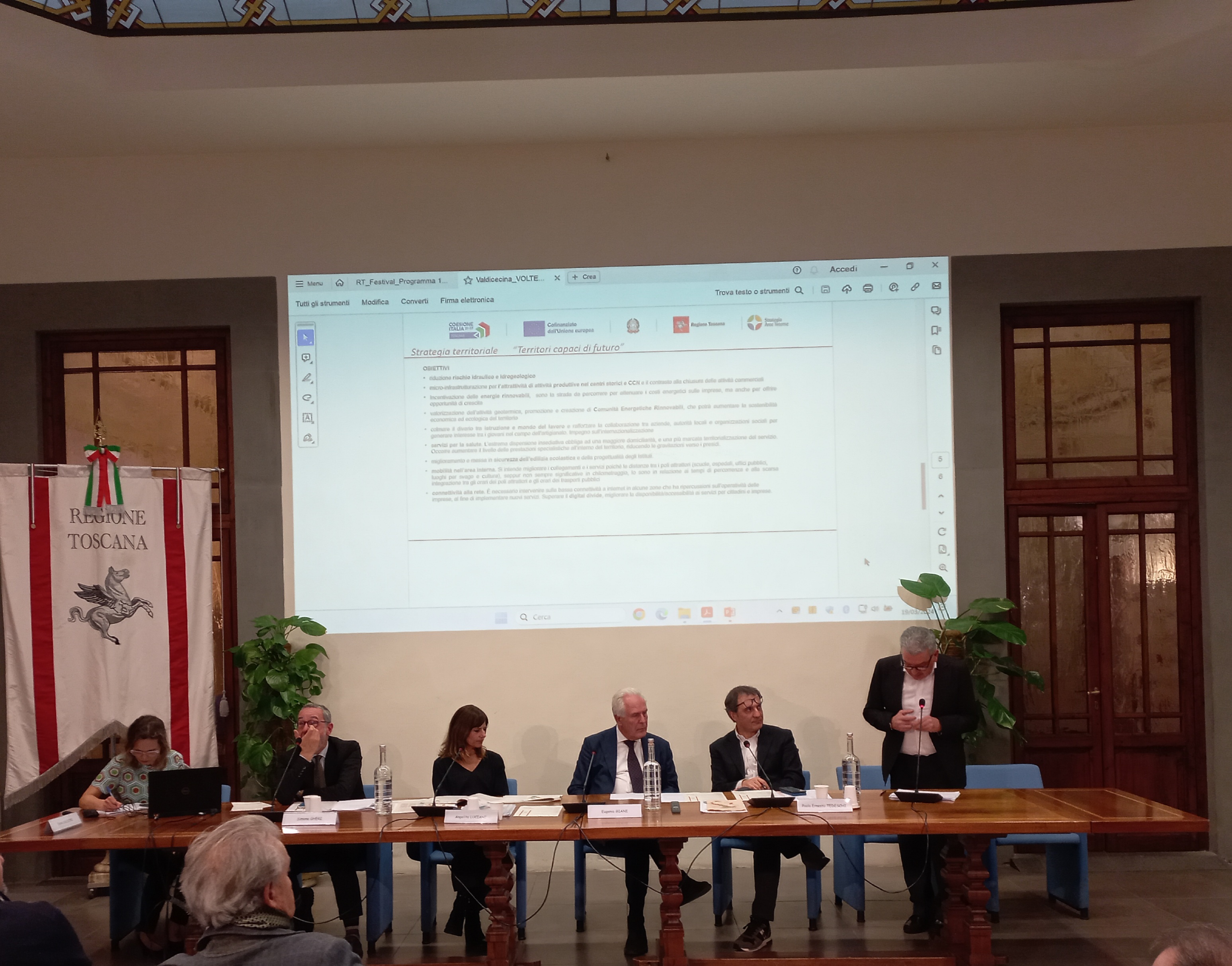
A regional law for the development and valorisation of places in widespread Tuscany. And encourage their repopulation. It was discussed this afternoon, during the second day of the Tuscan Identity Festival, in the session dedicated to internal areas. At the center of the meeting, which was also attended by President Eugenio Giani, was the need to provide for more balanced growth between the different territories through an investment strategy towards those areas where the processes of depopulation and abandonment are more accentuated . Both with the regional programs financed with the resources of the 2021-2027 ERDF Regional Programme, and with the law currently being developed.
According to Giani “the most appropriate definition is ‘diffuse Tuscany’, internal areas diminish their importance compared to other parts of the territory. Tuscany is one and only. It is right to underline the attraction exerted by the most important centres, but equal dignity also belongs to a small village or a center located on the coast, in the hills or in the mountains”. For this widespread Tuscany the Region is working on a specific law. “In the Regional Development Plan we have identified six areas which include 115 municipalities, out of a total of 273. The law being developed will provide incentives for young couples who want to live in these areas, in the form of rewards for renting or purchasing properties, or for those who want to start businesses and commercial activities. Interventions will also concern all services: health, education, social, digital connections, transport”.
Today’s meeting was an opportunity to update the work started and for a concrete and operational discussion with the administrators of all the bodies involved. Through the 2021-2027 ERDF Regional Programme, support is envisaged for the development and implementation of integrated territorial strategies in six internal areas which are an expression of local communities and which aim to respond to the specific needs and potential of the territories. The territorial strategies approach was tested in Tuscany in the previous programming within the SNAI (National Strategy for the development of the internal areas of the country) coordinated at national level, and involved three ‘pilot’ internal areas: Casentino-Valtiberina, Garfagnana-Lunigiana-Media Valle-Pistoia Apennines and Valdarno and Valdisieve–Mugello–Val Bisenzio’. To these are now added three more: Alta Valdera-Alta Valdicecina-Colline Metallifere-Valdimerse, Amiata Valdorcia-Amiata Grossetana-Colline del Fiora, Valdichiana Senese.
In the new programming, the role of the Region is strengthened, which is responsible for coordinating both the development and implementation phases of the territorial strategies. The Internal Areas go from three to six, with the active involvement of 115 municipal administrations. The resources, which in 2014-2020 were predominantly state, in the new seven-year period are first and foremost those of the regional programs of European funds, over 100 million from the ERDF PR and 6.6 million from the ESF+ PR. To these will be added the resources of the European Fund for Agriculture and Rural Development (EAFRD) and, according to national provisions, the state resources dedicated to the SNAI.
In 2023, after the start, in February, of the first phase of the process of developing territorial strategies (through a Notice of expression of interest to acquire the preliminary territorial strategies), in July the six Areas presented the proposals with the first lists of project ideas to apply for funding from the ERDF and ESF+ programmes. A technical commission (made up of representatives of regional managements and sectors) proceeded to evaluate the preliminary strategies and subsequently, in February 2024, the regional council, having taken note of the results of the evaluation, admitted them to the second phase of the procedure which provides for the development of the definitive strategies complete with the plan of financeable interventions. The same council has redetermined and distributed the resources available on the ERDF and ESF+ programs between the Areas, establishing that the selection of operations takes place through a negotiation procedure between the Region and local coalitions. Finally, in November 2023, the council also identified the Authority responsible for the Internal Areas and formed the Single Governance Committee for the Internal Areas, with the aim of supporting and overseeing the implementation of the Regional Strategy for the Internal Areas, of which Territorial strategies constitute the main nucleus.

